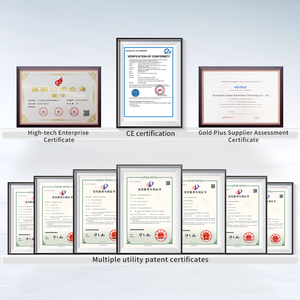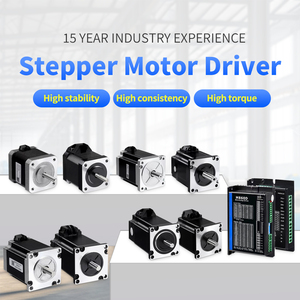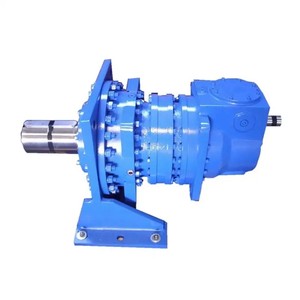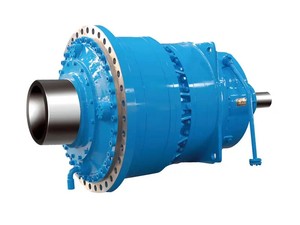
All categories
Featured selections
Trade Assurance
Buyer Central
Help Center
Get the app
Become a supplier

(18299 products available)













































Planetary gearbox reducers are the common mechanical devices applied in various operations. Several variations exist in these gearboxes to satisfy the diverse customer operational needs. The following are the main types of planetary gearbox reducers.
This is the most general planetary reducer. It has one set of planet gears that run between the sun gear and the outer ring gear. The system's compact nature enables it to be applied in areas with tight space. It is also efficient in load handling and provides multi-speed modes depending on the application.
These gearboxes are simple in construction, comprising a single set of sun, planet, and ring gears. They offer low to moderate gear reductions. The gearboxes are primarily used for small loads and low power applications. Consider these planetary gearboxes when seeking economical and uncomplicated solutions.
As the name implies, dual-stage planetary gearboxes have two sets of planetary gear stages. They provide higher gear reductions. This feature makes them suitable for heavy-duty industrial applications that require low speeds and increased torque. Users in mining and oil exploration industries require these gearboxes for their heavy machines.
This type of planetary reducer uses bevel gears to transmit power at right angles. It efficiently changes the direction of the power shafts in a system. These gearboxes are mainly used in applications requiring torque and power transmission change shaft directions. Such applications are marine and automotive systems.
High-precision planetary gearboxes provide minimal backlash and high positioning accuracy. This feature makes them ideal for robotics, aerospace, and CNC machinery. In these operations, every movement needs to be controlled with the utmost accuracy. Moreover, their premium construction quality comes with the cost of being more expensive than their counterparts.
This type of gearbox can lock the output shaft mechanically. It provides a method to stop the output even when the input is still turning. This is ideal for scenarios that require sudden stops or output shaft locking. They are regularly deployed in mining, construction, and heavy vehicle braking systems.
Planetary gearbox reducers find an extensive range of usage in various industries. Each required function exploits the gear reducers differently. Below are the common uses of these gearboxes.
Planetary gearboxes are applied in automatic transmissions. Here, they provide different speed and torque outputs. This results in smoother driving experiences. Overall, they eliminate the need for the driver to change gears manually. The gearboxes also find application in hybrid and electric vehicles. In these vehicles, the gearboxes are utilized in power-split mechanisms to balance between electric and mechanical drives.
Aerospace applications require high precision and reliability. Planetary gearboxes do provide these requirements. The gearboxes are mainly applied in aircraft engines and control systems. In these systems, the gearboxes help manage the torque and speed. This regulation is crucial for the overall flight safety and performance stability.
Robots' precise movements and payloads require accuracy and control. Planetary gearboxes provide the necessary reduction in motors. They allow for fine control in robotic arms, humanoid robots, and industrial bots. This makes them a crucial component in the robotics industry.
Construction machinery such as excavators, and loaders utilize planetary gearboxes for torque and power transmission to heavy loads. These gearboxes operate efficiently under extreme conditions. This makes them ideal for mining belt conveyors, which need to operate for long hours under heavy loads.
Wind turbine gearboxes convert the low-speed rotational energy of wind into high-speed electrical energy. This is done by reducing the planetary gear systems. These gearboxes are crucial in the wind energy sector for efficient power generation. They ensure the smooth operation of the turbines even under varying wind conditions.
Planetary gearboxes are widely applied in manufacturing machinery. These include CNC machines, conveyors, and mixing equipment. The gearboxes improve efficiency and longevity of the equipment, by providing high torque and low backlash. They are ideal for heavy-duty and high-precision industrial applications.
The planetary gearbox reducers are considered by many industries due to their strongness. The gearboxes also come with important features that improve their performance and efficiency of operation. Below are the key features, specifications, and requirements of these gearboxes.
Planetary gearboxes offer high torque capability due to their unique design. This design features multiple gears that distribute the load evenly. This allows them to handle high levels of torque without experiencing gear slippage or breakdown. They have been found ideal for heavy industrial applications in construction and mining requiring high torque.
Planetary gear systems are exceptionally efficient. They have an average efficiency of about 94% to 97% under normal operating conditions. Their efficiency comes from their roller gear's ability to minimize friction. High efficiency means less energy wastage in the form of heat, which boosts overall system performance.
Backlash is the small rotational movement of a gear that occurs when the driving gear turns before it engages with the driven gear. Planetary gearboxes have lower backlash than other gearbox types. They commonly have an average of 0.5 to 1 mm. This is because their output and input shafts are collinear. This gives them a direct drive configuration.
They also have a compact size despite their high performance and efficiency. For instance, they perform better than parallel shaft or helical gear systems of equal torque output. Therefore, they take up less machine space with a higher torque output. Their compact sizes make them suitable for applications where space is a limiting factor. Such applications are robotics, aerospace, and specialised machinery.
The multiple gear pair arrangement equally shares an applied load in a planetary gear system. This ensures all the gears are engaged and rotate simultaneously. This results in synchronous motion of the system. The synchronous operation improves torque transmission capability while reducing wear and tear on individual gears.
Planetary gearboxes are made of strong materials like hardened steel, which are resilient to extreme heat conditions. They can resist heat due to their efficient energy transfer and low friction features. This allows them to dissipate heat during continuous operations without overheating. Their heat resistance makes them suitable for high-load and high-speed applications.
Choosing the correct planetary gearbox reducer that will fit the customer's operational needs can be tricky. It requires various considerations. Below are these considerations.
Determine usage needs first. Know the customer's load requirements, operating speeds, and torque. Then select a gearbox that matches these criteria. For instance, high-torque applications require gear reducers that can handle the weight. Mining and construction gear reducers are suitable for massive loads. Therefore, they are common in mining and heavy construction.
The gearbox ratio is an important consideration when choosing a planetary gear reducer. The gearbox ratio must be proportional to the application speed requirements. The gearbox output must be lower than the input. This makes load carrying capability, speed reduction ratio, and torque multiplication the primary functions of planetary gearboxes.
Consider what level of backlash the application requires. Low backlash is essential for precision operations. Such operations are conducted in aerospace and robotics. These applications require minimal gear slippage. Backlash is not highly considered in high-torque industrial applications.
Understand the operating environment of the planetary gearbox. Consider factors such as humidity levels, temperature, and exposure to dust or chemicals. These elements can impact the gearbox's life. Choose a gearbox with strong materials and seals that can withstand harsh environments. For instance, Mining planetary gear reducers are made of strong materials to withstand the extreme mining environment.
Planetary gearboxes come in various sizes. Some are compact for limited spaces, while others are larger for easier mounting and maintenance. Mounting configurations also vary. Some are custom made to fit specific machinery, while others are standard designs. Ensure the gearbox size and mounting type match the customer's machinery requirements. This ensures seamless integration and optimum performance.
A1: Planetary gearboxes offer high torque capability, efficiency, low backlash, and a compact size. These features make them ideal for high-performance applications. Normal gearboxes, however, can suffer from high friction, leading to low efficiency and increased wear.
A2: Many manufacturers make planetary gearbox reducers from strong materials that can withstand extreme conditions. They commonly make them from steel alloy. This is because steel alloys provide high wear resistance, strength, and durability. Other materials include brass for corrosion resistance and hardened steel for its toughness and durability.
A3: They are worth every coin since they pay off in the long run. They provide better efficiency, superior torque handling, and long-term reliability. This means they have a low risk of breakdown, saving on maintenance costs. However, they have high upfront costs. Still, their efficiency and long life reduce energy losses and operating costs.
A4: Planetary gear reducers require regular oil checks and changes, cleaning, and inspections for wear and tear, amongst others. They also require monitoring for excessive heat generation or noise. Operating conditions should be maintained within standard limits to avoid excessive wear and tear on gearbox components.